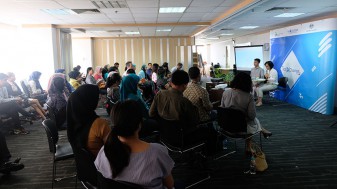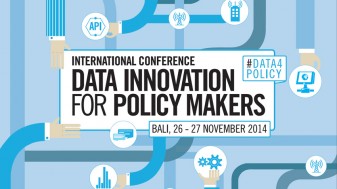More taxpayers submitted their annual tax returns (SPT) in 2019 increased compared to the year before. This is likely related to the initiative of the Directorate General of Taxes (DGT) to send email notification to taxpayers in the first week of March 2019.
“This email dispatch shifted the peak of SPT submissions to March 13th, eighteen days earlier than before” according to Acting Head of Mitigation and Risk Evaluation Section of the Directorate General of Taxes Gitarani Prastuti at KSI Xchange 17 entitled “Interventions Based on Behavioral Insights in Policymaking: Good Practices of the Directorate General of Taxes and BPJS Employment”, Wednesday, February 5th, 2020.
DGT decided to send email notifications to taxpayers after conducting a behavioral insight study. Previously, a large number of taxpayers would wait to file their returns until March 31st, the last day before the deadline. The forms are usually completed in a hurry, and taxpayers often fail be informed of new tax regulations. This phenomenon of filing en masse also overloads the system, frustrating taxpayers that cannot access it, which further discourages people from filing taxes.
Mindful of this behavioral phenomenon, DGT conducted a study to see what can be done to address the problem using the behavioral insight approach. Referring to work done by The Behavioural Insights Team (UK), taxpayers were divided into seven treatment groups of taxpayers with similar characteristics. The first group was not subject to any intervention. The second group received standard notification email; the third group received email with information in simple language. The fourth group received information about benefits of taxes for the public. The fifth group received email providing tax return filing instructions. The sixth group received an annual tax return payment schedule with the ability to set automatic reminders. The last group received email with a combination of group 5 and group 6 interventions.
As a result, according to Gita, the seventh group had the highest rate of annual tax return filing. It is this final intervention that was adopted as public policy.
“Analysis of facts and evidence through behavioral insight helped DGT in preparing and studying policies to be adopted,” says Head of Industrial Sector Taxpayer Compliance Section, DGT, Adityawarman.
Behavioral insight research was also conducted by the Social Security Administration for Employment (BPJS Ketenagakerjaan) in preparing its policies. Assistant Deputy for Social Security Research and Development of BPJS Ketenagakerjaan, Sartika Kooshanafiah, mentioned that research is needed to increase timely payments of BPJS Ketenagakerjaan contributions by companies and avoid late payments.
“Because I believe human behavior can be changed with certain approaches,” says Sartika.
BPJS Ketenagakerjaan conducted a behavioral experiment on five groups. The first group did not receive any email notification. The second group received an email that the majority of companies pay on time. The third group received email specifying the legal risks for not paying on time. The fourth group received email about risks for employees if the company fails to pay on time. The final group received an email about payment schedule.
The results showed that companies receiving email about legal risks had the highest payment compliance compared to others.
Tika specified five aspects that must be considered when using behavioral insight research, i.e., Target, Explore, Solve, Trial, dan Scale (TESTS). Target is the desired behavioral change from the policy. Explore means to explore the context and barriers to behavior change. Solve is the type of intervention, including efficiency and cost effectiveness. Trial is intervention testing and tangible outcome measurement before and after intervention. Scale means increasing the scope of intervention. Before scaling, it is also important to consider the available budget and the desired target when determining the best intervention for behavioral change.
“Some have strong interventions with large budget. Others have zero budget and a small effect. The best is to have a small budget and a strong effect,” says Tika.
Commenting on the good practices by DGT and BPJS Ketenagakerjaan, the Director for Population Planning and Social Protection of Bappenas Muhammad Cholifihani says that these practices can serve as valuable input for research-based policies. Behavioral change resulting from policy interventions would then be evaluated and studied for future planning.
“Planning based on behavioral insight can be [incorporated into planning] cycle to produce policies that reflect the conditions among the public,” says Mr. Cholifiani.
Improving the quality of public policies through behavioral insight also has its challenges, such as time constraints, trust to conduct studies, as well as funding. However, DGT and BPJS Ketenagakerjaan resource persons provide encouragement to adopt this approach as it has proven effective to improve public services.
Knowledge Sector Initiative (KSI) and Australian Government are present in such open discussions to support the Indonesian Government to improve the quality of policies through evidence and good practice. KSI supports such exchange of experiences and good practices by knowledge and development actors for public service innovation. The results are expected to enrich policymaking alternatives and improve the effectiveness of outcomes.**





